In Photos: Underwater Cameras Capture World's Sharks
A global shark census called Global FinPrint is getting underway with the daunting task of counting as many sharks as possible over the next three years. Using underwater cameras, a team of international scientists, with the help of volunteers, will scan more than 400 reef locations around the world. Here's a look at some of the images from the effort, courtesy of Global FinPrint. [Read the full story Fin Count: Global Shark Census Will Aid Conservation .]
Working hard
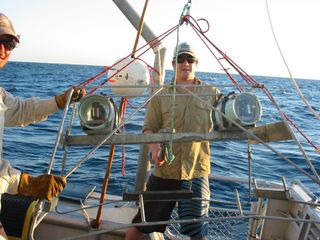
Researcher Mike Cappo of the Australian Institute of Marine Science. Scientists like Cappo plan to count sharks in the Indo-Pacific Ocean, the tropical western Atlantic Ocean (from Bermuda on south to Brazil), and the southern and eastern Africa and Indian Ocean islands.
Cuttle fish

Mark Bond, a researcher with Global FinPrint and Stony Brook University, swims alongside a cuttlefish, which are sometimes referred to as "chameleons of the sea," due to their amazing color-changing abilities. They have such sophisticated vision, cuttlefish can pick the perfect camouflage coloring without seeing the entire scene they plan to blend in with, researchers reported in 2012 in the journal Proceedings of the Royal Society B.
Taking care of sharks
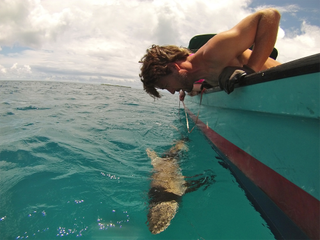
Lead principal investigator of the Global FinPrint project, Deiman Chapman of Stony Brook University, examines a Caribbean reef shark.
Sign up for the Live Science daily newsletter now
Get the world’s most fascinating discoveries delivered straight to your inbox.
The hardware

The researchers are using "baited remote underwater video cameras" (BRUVs) to capture images of the world's sharks. Sharks are lured toward the underwater camera by fish bait attached to the front of the contraption. Here, Mark Bond, a researcher with Global FinPrint and Stony Brook University, shows a BRUV.
Spending some time
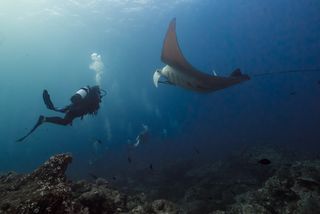
A Global FinPrint project researcher swims with a ray.
Sneaking a pic
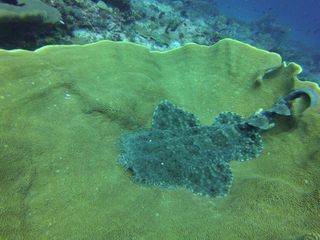
A Global FinPrint project researcher captures an image of a ray on coral reef with a GoPro camera.
Up close and personal
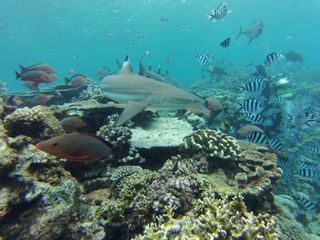
A Global FinPrint project researcher captures an image of a shark and other fish on a coral reef with a GoPro camera.
Endangered and important

Data collected in this global census could help scientists and policy makers come up with smart ways of protecting sharks; about 100 million sharks are killed every year, according to a study reported in 2013 in the journal Marine Policy.
Meeting the subjects
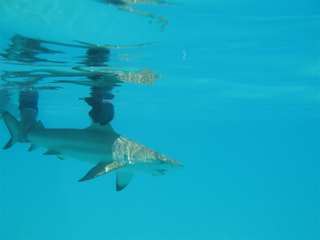
A Global FinPrint project researcher handles a shark. "A recent International Union for Conservation of Nature report indicated that we don’t have the data we need to accurately assess the current population status for almost half of shark and ray species," Dune Ives, senior director of philanthropy at Paul G. Allen’s Vulcan Inc., said in a statement. "Results from Global FinPrint will provide critical trend analyses and establish baselines in places that have never before been systematically assessed. This information will help inform more effective conservation efforts."
Getting to know the neighborhood

A Global FinPrint project researcher swims along a coral reef.
Investigation started

Mike Heithaus, co-lead principal investigator of the Global Fin Project and dean of the FIU College of Arts & Sciences.
Checking out the neighbors
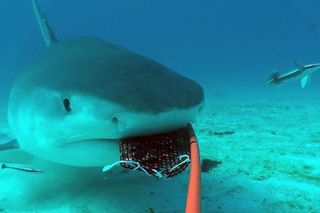
A shark approaches the baited remove underwater video (BRUV) camera established by Global FinPrint, the largest and most comprehensive data-collection and analysis program of the world’s population of reef-associated sharks and rays to provide insight on conservation efforts.
Getting it just right
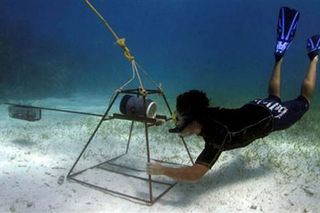
Mark Bond, a researcher with Global FinPrint and Stony Brook University, positions one of the baited remove underwater video (BRUV) cameras at Glover’s Reef Marine Reserve.
Tiger and me

Mark Bond, a researcher with Global FinPrint and Stony Brook University, poses with a tiger shark.
The camera
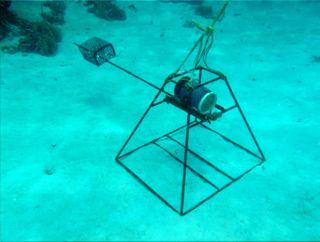
An up-close look at the baited remove underwater video (BRUV) camera from Global FinPrint.
Most Popular


